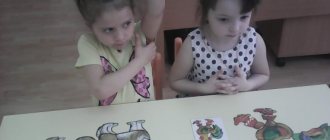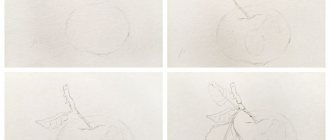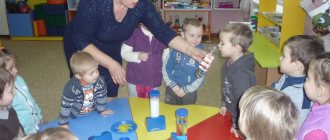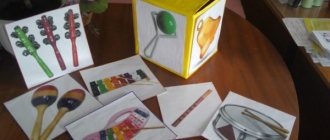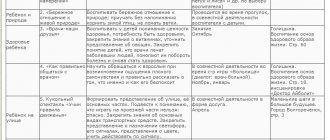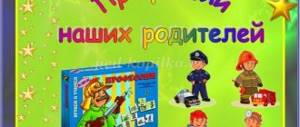Techniques
To conduct didactic games, as in any other educational activity, the teacher uses three groups of techniques.
Verbal
The word of an adult plays a leading role for children 3–4 years old who are actively mastering speech. At the same time, children not only perceive the semantic component of the teacher’s speech, but also form their own communicative image, that is, they replenish their vocabulary, form a set of non-verbal components (facial expressions, gestures, manner of speaking). In didactic games, three types of verbal techniques are used.
The teacher’s speech is a role model for children
Explanation
Of course, the most important technique in working on educational games: the teacher not only describes in detail all stages of the game, but also gives recommendations and instructions along the way.
Before the game starts, the teacher describes all game materials
Puzzles
This is a motivational technique used before the game starts. Often, the teacher uses riddles to make the transition from direct educational activities to gaming ones. So, when studying the topic “Birds”, before giving the task to find similarities and differences between individual birds, but after the teacher has described the animals and let them listen to the sounds they make, the kids are offered riddles about birds. Eg:
- Who sings so loudly About the fact that the sun is rising? (Cockerel);
- Red paws, Pinches your heels, Run without looking back. (Goose);
- Black, darker than the darkness, There are no birds, he is smarter. On a tall spruce tree - there he is. This is an old, wise... (Raven).
In the second younger group, unlike the first, where all the riddles had agreements, classical patterns are introduced, that is, when the answers to the riddles do not rhyme with quatrains.
Guessing the contents of a magic bag is much more interesting using riddles
Short stories
Small stories preceding the game are the most successful motivational technique. Moreover, the story can not only directly relate to the course of the game, but also indirectly, when a fairy-tale hero (a toy or an image in a picture) offers to play the game as a thank you for help in solving educational problems.
In my practice, I use this technique like this: after the children have helped Dunno name the insects depicted in the pictures (birds, animals, plants), he invites them to play a game in which they need to connect bugs of different shapes with a suitable shadow. If we talk about fairy tales in which the games are woven, then this could be a story about how Luntik is going to go out for a walk in the winter, but does not understand at all what clothes to wear. The children's task is to help their fairytale friend.
Visual
Figurative-visual perception is the leading one in children, therefore, to fully understand the conditions of the game, children need to see:
- pictures showing game characters or guys playing;
- a sample of actions, that is, a game performed by the teacher from beginning to end;
- aesthetic and comfortable materials for playing.
Images in pictures must be large
Practical
After the teacher has demonstrated all the game actions, the children move on to the game itself, which in itself is a practical understanding of the activity. In addition, after the game, kids can make drawings and applications based on the fun.
For example, when distributing food among forest animals, I give the children the task of either drawing nuts for the squirrel, or gluing them in the form of an applique.
Creating drawings and applications based on games is a practical way to reinforce the material
Time plan
The duration of the game in the second younger group is 10 minutes. During this time, the teacher and children work through four stages.
- Introductory part - up to 2 minutes. The teacher motivates the children to be active in games.
- Familiarization with game conditions - up to a minute. The teacher explains the task and demonstrates the order of execution.
- Playful activities for children - up to 5 minutes. This stage also includes increasing the complexity of the task, as an option for individualizing the game.
- The final stage is up to 2 minutes. The teacher evaluates the results and praises the kids for their work, attentiveness and accuracy.
This is interesting. The timing of a didactic game is very approximate, since the time to complete a game task depends on the content of the game, as well as on the number of game actions that children need to complete.
If there was physical education and choreography before the game, then the fun time should be reduced by two or three minutes
How to evaluate the result of the game
The result of the game means an assessment of the solution to the problem and the implementation of the rules. This analysis is carried out from two sides: the pupils and the teacher. From the point of view of the first, it is taken into account:
- the degree of moral satisfaction with the game process and one’s participation;
- level of demonstrated intelligence, attention, memory;
- emotional mood.
The teacher evaluates educational gaming activities from the position of:
- accuracy of fulfillment of tasks assigned by didactic fun;
- implementation of prescribed game actions;
- organization of the game situation.
Table: example of a summary of the didactic game “Fix the Car” for the second junior group
Author - Karpenko O., teacher of MBDOU d/s No. 36 “Golden Grain”, Novoshakhtinsk, Rostov region.
| Stage | Content |
| Introductory | The teacher calls the children and shows the Traffic Light toy: - Guys, the Traffic Light has come to visit us. He says the wheels of the cars fell off and rolled in different directions. The traffic light boy collected them and brought them to the kindergarten. He asks to fix the cars so that there is no accident on the road. |
| Read the terms and conditions | - Let's help the traffic light and pick up wheels for the cars. The wheels must match the color and size of the car. |
| Play activity | Children choose their own sets of cars and circles. The teacher asks to name the color and size of the selected cars. It asks you to think about what size and color wheels you need for a large (small) car. Specifies whether the car will drive fast or slow on the selected wheels. |
| Final stage | When all the wheels have been selected, the teacher, on behalf of the Traffic Light, thanks the children and offers to swap cars to continue the game. |
| https://www.maam.ru/detskijsad/didakticheskaja-igra-pochini-mashinu-dlja-detei-2-mladshei-grupy.html | |
The game Fix the Car, among other things, also forms the idea of a harmonious combination of colors
Video: didactic game with toys in the second junior group “Who Lives in the Forest”
The essence of the concept
Didactic games are educational games that involve organizing children’s activities in conditional situations where the game task has educational significance, that is, it carries cognitive value. This goal is not realized openly, but indirectly: through a game task (for example, help a bunny count carrots), rules (“the hare” can take only one carrot at a time and put it in the basket), game actions (participants “go to the “storage” of vegetables " one by one).
This is interesting. The outstanding Soviet psychologist, teacher and philosopher Alexei Nikolaevich Leontyev called didactic games “milestone”, that is, denoting the transition from exclusively gaming activities to educational ones.
Didactic games are a transition from gaming activities to educational ones
Goals and objectives
The mission of educational games is:
- development of cognitive activity (imagination, memory, observation, speed of thinking);
- forming the concept of the sequence of performing intellectual operations (for example, mastering counting to 10);
- training stable and voluntary attention;
- speech development;
- activating the desire to interact with peers and adults;
- stimulating the need to feel part of a team;
- encouraging the desire to interact with adults and children;
- fostering the need to feel part of a team.
Playful activities teach children cooperation
The tasks that are solved with the help of didactic games in the second junior group can be identified as follows:
- learning to compare and select objects based on the same, similar or completely different characteristics (for example, different vegetables by ripening season, by appearance, by the location of the edible part of the plant in relation to the ground);
- developing the ability to classify objects by type or material of manufacture (dishes by shape or by raw materials used in production - metal, clay, porcelain);
- developing the skill of identifying an object by one fundamental feature or several (kids describe the animal, and one child guesses who they are talking about);
- training attention and memory (for example, kids remember the sequence of objects or pictures, turn away, and the teacher changes the location or removes one object, children must describe the changes).
This is interesting. The didactic game, providing children with the opportunity to learn in an easy, relaxed manner, gave rise to the development of such a type of learning as autodidactics, that is, self-learning. More information about didactic games in mathematics in the first and second junior groups can be found in our article - Didactic games in mathematics in the first and second junior groups: filling up the card index and planning lessons.
Didactic games introduce children to the manifestation of independent cognitive activity

